All Articles
The Essential Restaurant Equipment Guide
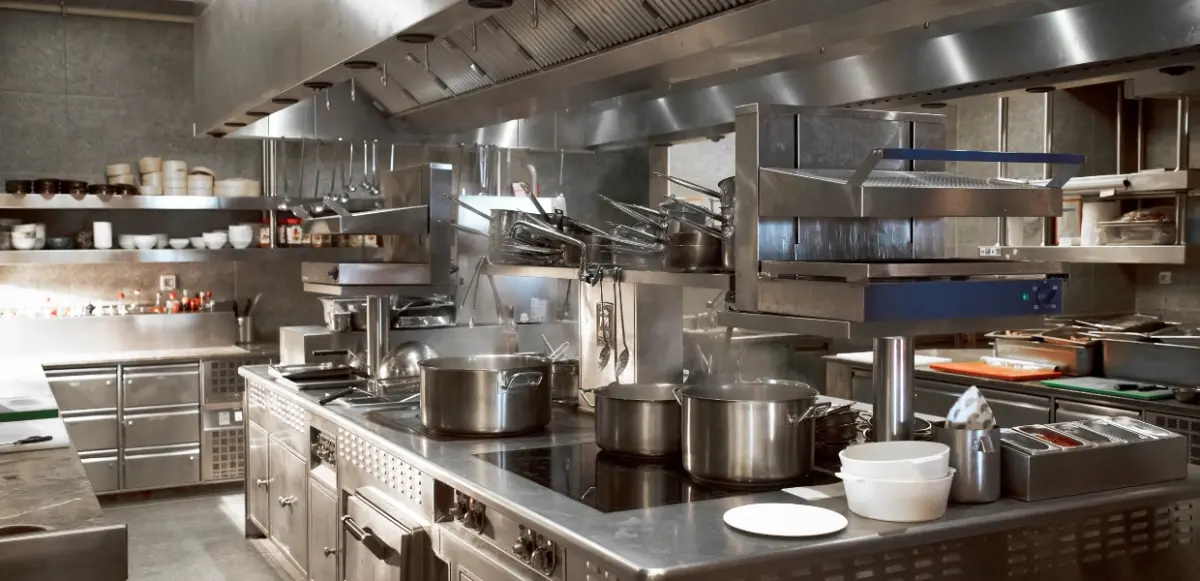
The primary factor in a restaurant significantly influenced by restaurant equipment is the overall operation. While a well-trained staff is crucial, the equipment plays a key role in determining the restaurant’s efficiency, food quality, cleanliness, and numerous other aspects critical to its success. If you are planning to open a restaurant and are unsure about the essential equipment you will need, this guide will help you navigate through the must-have items necessary to set your business up for success. Whether you are launching a small café, a fine dining establishment, or a bustling fast-food spot, this comprehensive guide covers everything from kitchen essentials to front-of-house necessities.
Commercial Kitchen Equipment
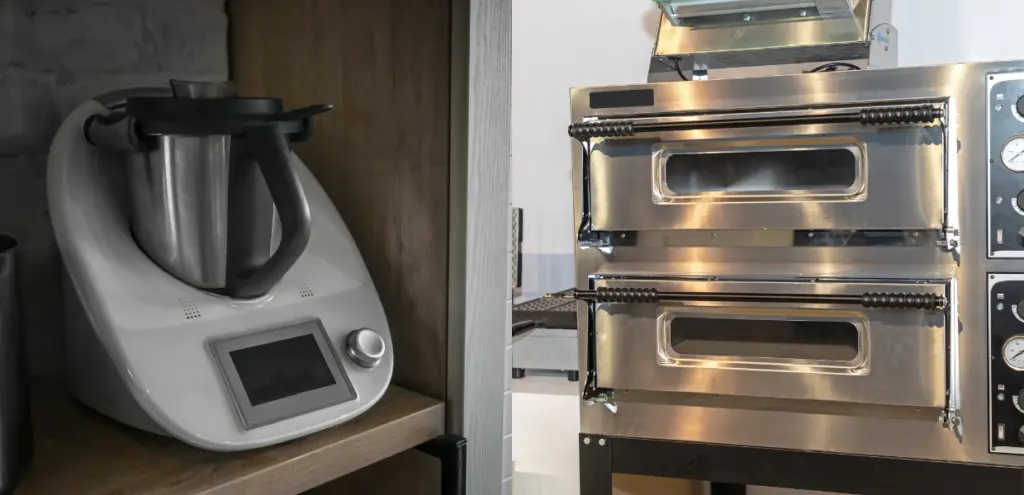
The kitchen is the heart of any restaurant. If this area is not properly equipped, your restaurant will likely fail. Below is a breakdown of the most essential items every restaurant kitchen should have:
Cooking Equipment
- Ovens: Depending on your menu, you may need one or more types of ovens. Convection ovens, which circulate hot air for even cooking, are a staple in many kitchens. If you specialize in pizzas or baked goods, consider a deck oven or a conveyor oven for high-volume baking. A combi oven, which offers a combination of convection and steam cooking, might be ideal for fine dining.
- Ranges and Cooktops: A commercial range is essential for any restaurant, allowing you to sauté, boil, simmer, and sear with precision. Gas ranges are the most popular in professional kitchens because of their immediate heat control, but electric ranges are also an option.
- Griddles and Grills: Griddles are ideal for cooking various foods, from pancakes to burgers. A charbroiler or a gas grill is a must-have if your menu includes grilled items like steaks or seafood.
- Fryers: Most commonly used in fast-food restaurants, deep fryers are essential for any restaurant that serves fried foods. Choose between open-pot fryers, which are great for cooking breaded items, and tube-type fryers, better suited for heavily battered foods.
- Steamers: Ideal for cooking vegetables and seafood, steamers preserve nutrients and flavors, making them a healthy cooking option.
Refrigeration and Storage
- Refrigerators and Freezers: Depending on your kitchen size and menu, you might need reach-in refrigerators and freezers, walk-in coolers, or under-counter refrigeration units. Ensure that your refrigeration units comply with health department regulations and are energy-efficient.
- Prep Tables with Refrigeration: These offer a work surface and refrigerated storage for ingredients like salads, sandwiches, and pizza toppings, all within arm’s reach.
- Ice Machines: Invest in a high-capacity ice machine that will help you serve cold drinks and keep food fresh.
Food Preparation Equipment
- Mixers: If you work with large quantities of dough or whipped cream, consider investing in a commercial mixer.
- Food Processors: These save time on labor-intensive tasks such as chopping, slicing, grating, and pureeing. A good food processor can handle everything from vegetables to nuts with ease.
- Slicers: A commercial slicer is necessary for consistently cutting meats, cheeses, and vegetables to the right thickness, especially in a deli or sandwich shop.
- Blenders: These are needed to prepare everything from smoothies to soups. Consider models that can handle both hot and cold ingredients.
- Cutting Boards and Knives: These are the foundation of any kitchen. Invest in high-quality knives and durable, easy-to-clean cutting boards. Having separate boards for different food types (meat, vegetables, etc.) would be a great idea because it will help prevent cross-contamination.
Cooking and Baking Smallwares
- Pots and Pans: Choose heavy-duty, commercial-grade options that withstand heat and constant use.
- Baking Sheets and Pans: Essential for baking and roasting, these should be durable and easy to clean.
- Mixing Bowls: Stainless steel mixing bowls are durable, easy to clean, and come in various sizes. They are a must for mixing ingredients, marinating, and holding prepped foods.
- Measuring Cups and Spoons: Precision is vital in a commercial kitchen, so accurate measuring tools are necessary.
- Utensils: For food preparation, you will also need whisks, spatulas, tongs, ladles, and spoons. Opt for heat-resistant, commercial-grade utensils.
- Thermometers: Food safety is paramount, and thermometers are essential for ensuring food is cooked to safe temperatures. Consider probe thermometers for checking internal temperatures and infrared thermometers for surface readings.
Sanitation and Safety Equipment
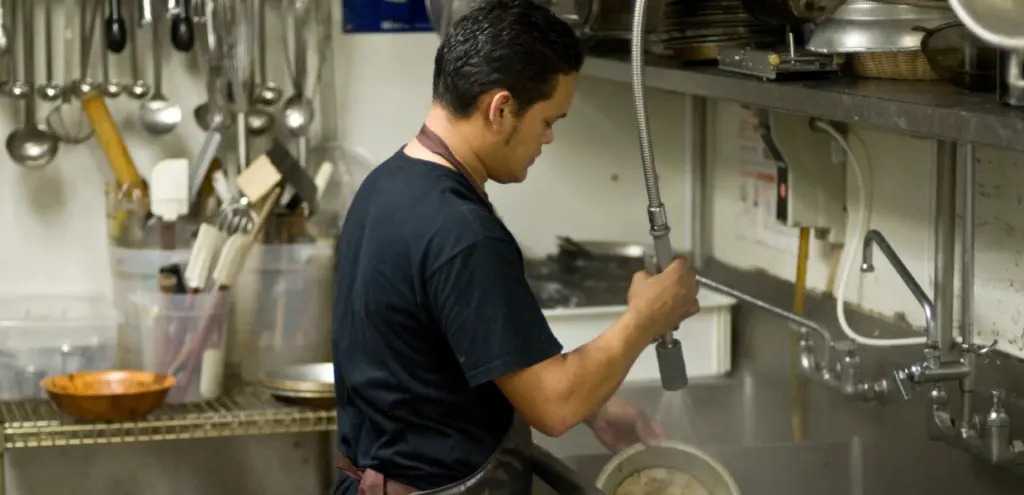
You must take very serious safety and sanitation measures to meet health department regulations, even though these are extremely important, and ensure the well-being of your staff and customers.
Dishwashing Equipment
- Dishwashers: A commercial dishwasher is a must-have for any restaurant. High-temperature models use heat to sanitize, while low-temperature models use chemical sanitizers. Consider your kitchen’s space and volume to choose the suitable model.
- Three-Compartment Sinks: Health departments require these sinks, which allow for washing, rinsing, and sanitizing dishes manually. They are also helpful for cleaning larger pots and pans that may not fit in a dishwasher.
- Handwashing Stations: These should be conveniently located throughout the kitchen to encourage frequent handwashing. Ensure they have soap dispensers, paper towels, and clear signage.
Cleaning Supplies
- Mops, Buckets, and Brooms: Keeping the kitchen and dining areas clean is non-negotiable. Invest in durable cleaning tools and store them in a designated area to maintain hygiene.
- Sanitizers and Detergents: Use food-safe cleaning products to sanitize work surfaces, equipment, and utensils. Ensure that all cleaning supplies are clearly labeled and stored safely.
- Grease Traps: Essential for preventing clogged drains, grease traps capture fats, oils, and grease from cooking equipment. Regular maintenance keeps them functioning properly.
Safety Equipment
- Fire Extinguishers: A legal requirement in any commercial kitchen is that fire extinguishers be readily accessible and staff-trained. Depending on the type of fire, different classes of fire extinguishers (A, B, C, K) are needed.
- First Aid Kits: Accidents happen, and restaurants must have a well-stocked first aid kit. Ensure it includes bandages, burn cream, antiseptic wipes, and other essentials.
- Non-Slip Mats: Kitchens can become slippery, especially when wet. Non-slip mats in critical areas, like behind the line and in front of sinks, can help prevent falls.
- Ventilation Systems: Proper ventilation is critical for maintaining air quality and removing heat, smoke, and odors. A commercial kitchen hood with an exhaust fan is typically required.
Front-of-House Equipment
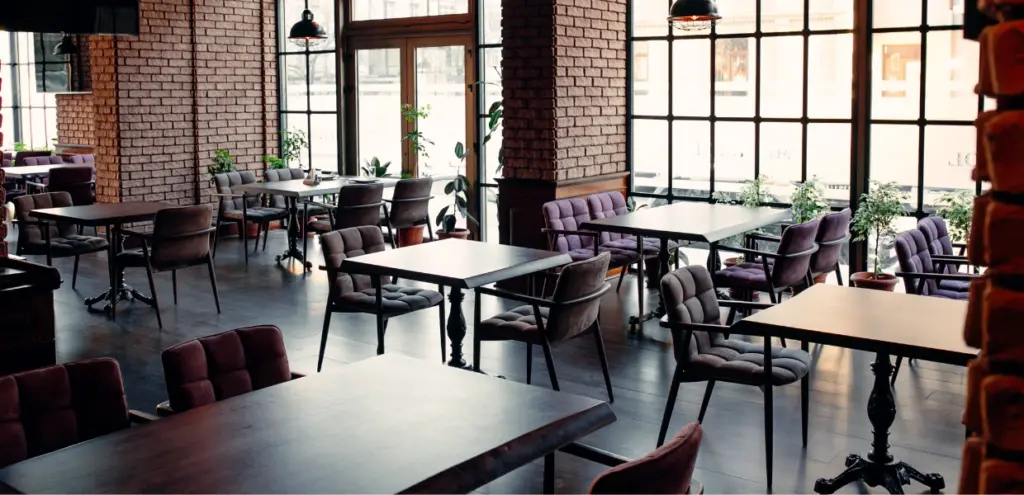
The front-of-house area is the part of the restaurant visible to customers, where both waitstaff and patrons interact. This area includes the seating area, the counter, and, depending on the restaurant, the bar, among other elements. Each section should be adequately equipped to elevate your brand, provide customers with a pleasant experience, and ensure a positive working environment for your staff.
Seating and Tables
- Tables: Depending on your restaurant’s style, you might need anything from standard four-top tables to large communal tables or intimate two-seaters. Ensure that the tables are durable, easy to clean, and match the aesthetic of your restaurant.
- Chairs and Booths: Comfortable seating is a must. Based on your restaurant’s design, choose from chairs, bar stools, or booths. As with tables, durability and ease of cleaning should be critical considerations.
- High Chairs and Booster Seats: If your restaurant caters to families, you need these to accommodate younger guests.
Serving Equipment
- Serving Trays are essential for carrying food and drinks and clearing tables. They should be sturdy and easy to grip to prevent spills.
- Menu Holders and Check Presenters: These small items add a professional touch to the dining experience and help keep things organized.
- Condiment Dispensers and Caddies: Ensure your tables are well-stocked with salt, pepper, and other condiments. Caddies keep everything neat and accessible.
Beverage Service
- Coffee Makers and Tea Brewers: If your restaurant serves breakfast or offers hot beverages, you need commercial-grade coffee makers and tea brewers. Choose models that can handle high volume.
- Espresso Machines: A quality espresso machine is necessary for cafes or restaurants focusing on coffee.
- Soda Fountains and Beverage Dispensers: They are used primarily in fast-food restaurants. Ensure that they are easy to use and maintain.
- Wine and Beer Coolers: Restaurants with a bar need dedicated coolers for wine and beer to maintain optimal serving temperatures.
Specialty Equipment
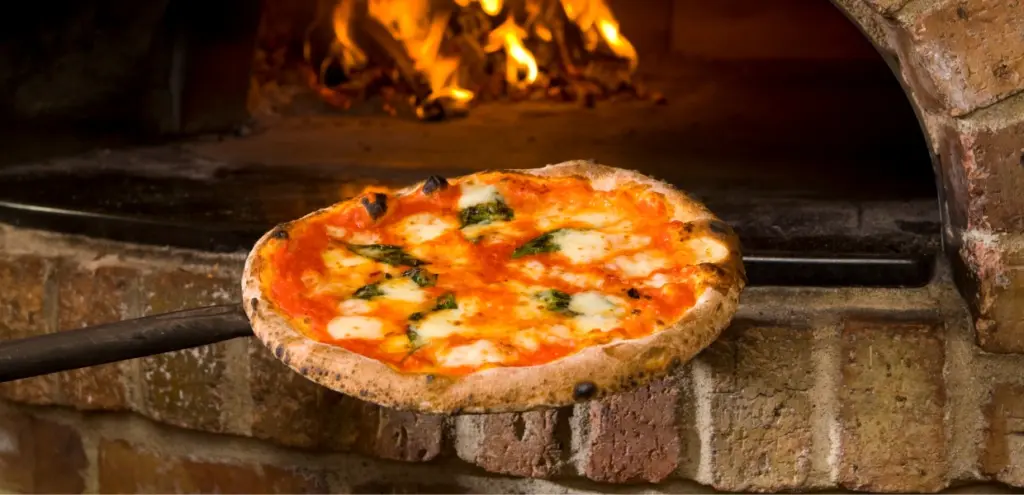
Depending on your restaurant’s concept, you might require specialty equipment that caters to specific culinary needs.
Pizzeria Equipment
- Pizza Ovens: The cornerstone of any pizzeria, choose from brick ovens, conveyor ovens, or deck ovens depending on your volume and desired crust style.
- Dough Sheeters and Mixers: These save time and ensure consistent results when preparing pizza dough.
- Pizza Prep Tables: These combine a refrigerated prep area with a countertop, making it easy to assemble pizzas quickly.
Bakery Equipment
- Proofing Cabinets: Essential for controlling the temperature and humidity during the dough-rising process.
- Pastry Ovens: Convection ovens are ideal for baking pastries evenly and quickly.
- Decorating Tools: Piping bags, decorating tips, and turntables are necessary for creating visually stunning cakes and pastries.
Bar Equipment
- Blenders and Shakers: A high-powered blender and quality cocktail shakers are must-haves for making cocktails.
- Glassware: Stock a variety of glassware for different beverages, including wine glasses, beer mugs, and cocktail glasses.
- Ice Crushers and Ice Bins: These are essential for bars that serve cocktails that require crushed ice. Large ice bins keep a ready supply of ice for high-volume service.
Final Considerations
Here are some general considerations you would like to consider when choosing your restaurant equipment:
Energy Efficiency
Investing in energy-efficient equipment not only reduces your environmental impact but can also significantly lower your utility bills.
Durability and Maintenance
Choose equipment built to last, as restaurant equipment undergoes heavy use daily. Regular maintenance is critical to extending the life of your equipment, so consider setting up a maintenance schedule and training staff on proper care.
Space and Layout Planning
Your kitchen and dining area layout should be efficient, allowing for smooth workflow and easy movement. Ensure there is enough space for each piece of equipment, and consider how the equipment placement will affect operations.
Compliance with Regulations
Ensure that all equipment meets local health and safety regulations. This includes everything from proper ventilation systems to fire safety equipment. Compliance not only keeps your restaurant safe but also prevents costly fines and closures.
Budgeting
While going for the best and newest equipment is tempting, balancing quality with cost is essential. Consider leasing options for expensive items and look for reputable suppliers who offer warranties and service contracts.
Conclusion
Equipping a restaurant is a significant investment, but it pays off in efficiency, safety, and customer satisfaction. By carefully selecting the right restaurant equipment, you set the foundation for your restaurant’s success. From the kitchen to the front of the house, each piece of equipment plays a vital role in creating a seamless dining experience for your customers.
Remember, the key to choosing the right restaurant equipment lies in understanding your specific needs, planning for the future, and prioritizing quality and durability. With the right tools in place, your restaurant is well on its way to becoming a favorite dining destination.
 3 September 2024
3 September 2024 7 min read
7 min read

